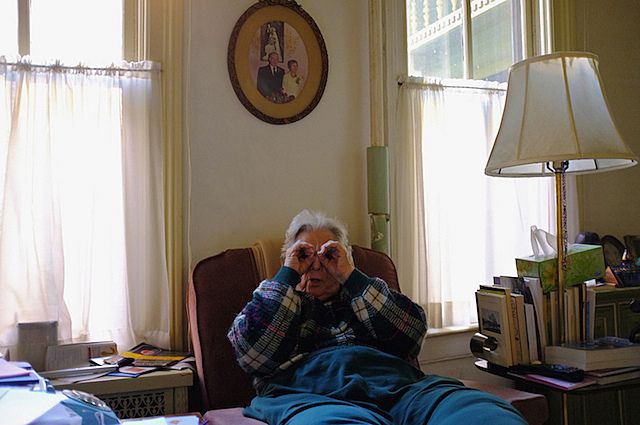Cold Call: A Review of A Streetcar Named Desire
Melissa Laing reviews Shane Bosher's production of A Streetcar Named Desire and finds a production in which the Louisiana heat feels surprisingly cold.
Melissa Laing reviews Shane Bosher's production of A Streetcar Named Desire and finds a production in which the Louisiana heat feels surprisingly cold.
It’s an ambitious choice to mount one of the greatest plays in the Western canon. A Streetcar Named Desire by Tennessee Williams requires stamina, emotional resilience and hyper-specific accents from its actors. Silo Theatre is no stranger to staging well-known international works and they've assembled an experienced cast and production team to realise their ambition. However despite the collective talent and some flashes of brilliance along the way, director Shane Bosher’s production does not achieve the heights it could.
At the heart of A Streetcar Named Desire is the broken Blanche Dubois, in this production played by a nervy, fast-talking Mia Blake. A fantasist with a narcissistic streak, Blanche descends on her sister with $7.40 in her purse, chock full of prejudices and hiding the total collapse of her former life. While she still clings to her status, mustering the trappings of her class – education, aesthetics, elocution and virtue – to shield her from the realities of her alcoholism and economic and social fall, her sister Stella has fit herself to the world she has married into – working class, ethnically diverse, and sexually frank. Throughout the play the extent of Blanche’s fantasies, the life events that drove her into them and the insecurities they paper over are brutally exposed by Stanley, Stella’s husband. His antagonism toward Blanche and her contempt for him are fixed in a self-fulfilling cycle; she hates him for his working-class Polish roots and for his violence towards her sister Stella. His antagonism is fuelled by her class contempt and by a culture of toxic masculinity.
While Silo Theatre claims to have set their production against “the grueling contemporary landscape that is Trump’s America” the only thing that explicitly sets it in the now is the intermittent use of technology – phones and computers. The production itself is dislocated in time, the clothing ambiguously referencing fashion across the last 50 years. John Verryt’s set, intended to convey a tiny two-room apartment in a narrow two-story back alley building, is a strange combination of a bus station and community hall lit with neon tubes. It's populated with rows of plastic chairs, a fold-out table, and a gym shower compressed under a low ceiling that resembles an overbridge. A black plinth sits in the middle of the floor and acts as a catch-all for the kitchen, fridge and the liquor cabinet that Blanche pretends she does not visit.
The audio design by Paul McLaney is an integral component of the performance, alternately bursting forth with music, rumbling with ambient noise to underscore the tension of a scene and later in the play, interrupting the performance with the noise of rumbling trains overhead; a noise that Blanche’s shrinks from as indication of her decline. Where the score successfully structures the performance in the first half, in the second half it begins to hurry the play, cutting in quicker and louder as we approach the climax leaving little room for the dialogue and performances to breathe.
Blake’s Blanche is brittle, restless, self-destructive, but curiously, asexual.
The sum result of these design elements is a cold, bare, noisy space for the performances to exist within. This at times works in service of the play, underpinning Blanche’s alienation in a hostile world. But it does little to support or convey the world that Stella and Stanley are part of, instead implying that they too are transitory and unrooted within their social context. It’s a directorial framing that indicates a certain lack of sympathy for the working class world that is the counterpoint to Blanche’s fantasies.
A Streetcar Named Desire’s themes of poverty, domestic and sexual violence, emotional trauma and racism are highly pertinent to us at a time when New Zealand is experiencing high levels of housing insecurity, domestic violence and economic inequality. This relevance, coupled with the inconsistency of the the actors’ Southern accents and the design’s disconnection from any specific temporal setting makes me question whether A Streetcar Named Desire must be set in the South of the United States. Certainly, most international productions of the work have retained the Southern setting as an integral part of the work; the specific social and gendered context of the wealthy Southern woman acting as an explanation for her mannerisms and values and making her sexual promiscuity all the more ‘shameful’. But is this convention a necessity, or when presented with the above inconsistencies does it err on the side of cliché?
The volume of dialogue that Mia Blake must deliver over the three-hour performance is prodigious, and the quick emotional changes that occur from phrase to phrase demanding. Blake’s Blanche is brittle, restless, self-destructive, but curiously, asexual. Her command of the script is thorough and she shifts tone from bubbly to insecure skilfully, yet her portrayal of Blanche’s flirtations with Stanley and his friend Mitch lack the carnal awareness of a sexually experienced woman who seduces young men. This absence of sexual awareness undercuts one of the key emotional legs of the play – a tension derived from unfulfilled desire.
Blanche’s moments of truth in her monologues to Mitch are a highlight of her performance, convincingly exposing what her fantasies attempt to hide – a significant life trauma from which the emotional impact has been left to fester. We can believe she married a beautiful young man who had no desire for her and rejected him for his sexuality, yet the sexual promiscuity she later confesses to is portrayed as without joy – a self-destructive pursuit she can’t admit to rather than a hedonistic means of bringing feeling into her life. This punitive line is reinforced by the continued appearance of a voiceless young man who, in a slightly obvious and distracting way, represents her rejected and dead husband.
Blanche's assault, collapse and subsequent rejection have a certain inevitable nastiness to them as byproducts of a hostile world, rather than any visceral emotional impact.
Throughout the play Ryan O’Kane plays Stanley with an arrogance and self-absorption that carries the role. His calling for Stella after he abuses her, and his malicious glee in breaking Blanche’s facade is a high point of his performance. Played by Morgana O’Reilly, Stella is a woman caught between her old and new life. Indeed Stella is the glue that holds the play together, shuttling between her lover and sister, placating and managing both. O’Reilly brings an underlying calm confidence to the role, rendering Stella stronger in her own mind than the script sets forth. Her calm balances Blake and O’Kane’s performance of emotional excess. Both O’Kane and O’Reilly shine in the iconic make up scene after he’s cried her name into the night. Stanley’s remorse, her forgiveness and their resulting sex powerfully communicates the complex co-dependent dynamics of abusive relationships with few words.
Yet Bosher’s decision to couple a cold set with performances that emphasise the characters self-destructive behaviour with little leavening warmth, results in a feeling of disconnection from the emotional trajectory of the play. His Streetcar is set in a cold, precarious society and the people who populate it are narcissistic, narrow-minded or weak. As a viewer, having not formed a significant emotional bond with Blanche, her assault, collapse and subsequent rejection by her sister have a certain inevitable nastiness to them as byproducts of a hostile world, rather than any visceral emotional impact.
Two implied elements which haunt William’s script – Blanche’s memories of her husband’s suicide and her rape by Stanley – are spelled out in embodied performances, which empties them of the mysterious tension they create in the narrative. It’s an indication of the on-the-nose brutality which seems to define this Streetcar, and it’s this mix of emotional disconnect yet surprising literalness that means the production fails to reach its full potential. While the central performances have a coherency and professionalism that carry the production through without flagging, the balancing warmth that would help us connect with and care about these characters is strangely lacking. The sum of all these parts is a good iteration of Tennessee Williams' classic, but not a great one.
A Streetcar Named Desire runs from August 24 – September 16 at Q Theatre. Tickets available here.




